购物车
全部删除  您的购物车当前为空
您的购物车当前为空
别名 PIG61, NISBD2, mENA, LEGFR, HER1, ERBB1, ERBB, EGFR, EC 2.7.10.1, EC 2.7.10
Anti-EGFR Antibody (9H356) 是一种 Rabbit 抗体,靶向 EGFR。Anti-EGFR Antibody (9H356) 可用于 ICC/IF,IHC,IP,WB。
Anti-EGFR Antibody (9H356) 是一种 Rabbit 抗体,靶向 EGFR。Anti-EGFR Antibody (9H356) 可用于 ICC/IF,IHC,IP,WB。
| 规格 | 价格 | 库存 | 数量 |
|---|---|---|---|
| 50 μL | ¥ 1,490 | 5日内发货 | |
| 100 μL | ¥ 2,480 | 5日内发货 |
| 产品描述 | Anti-EGFR Antibody (9H356) is a Rabbit antibody targeting EGFR. Anti-EGFR Antibody (9H356) can be used in ICC/IF,IHC,IP,WB. |
| 别名 | PIG61, NISBD2, mENA, LEGFR, HER1, ERBB1, ERBB, EGFR, EC 2.7.10.1, EC 2.7.10 |
| Ig Type | IgG |
| 克隆号 | 9H356 |
| 交叉反应 | Human,Mouse,Rat |
| 验证活性 | 1. Western blot analysis of EGFR on different cell lysates using anti-EGFR at 1/500 dilution. Positive control: Line 1: Hela, Line 2: A431, Line 3: HUVEC. 2. Immunohistochemical analysis of paraffin-embedded human tonsil tissue using anti-EGFR antibody. Counter stained with hematoxylin. 3. Immunohistochemical analysis of paraffin-embedded human kidney tissue using anti-EGFR antibody. Counter stained with hematoxylin. 4. Immunohistochemical analysis of paraffin-embedded mouse liver tissue using anti-EGFR antibody. Counter stained with hematoxylin. 5. Immunohistochemical analysis of paraffin-embedded mouse skin tissue using anti-EGFR antibody. Counter stained with hematoxylin. 6. Immunohistochemical analysis of paraffin-embedded mouse kidney tissue using anti-EGFR antibody. Counter stained with hematoxylin. 7. ICC staining EGFR in Hela cells (red). The nuclear counter stain is DAPI (blue). Cells were fixed in paraformaldehyde, permeabilised with 0.25% Triton X100/PBS. 8. ICC staining EGFR in A431 cells (red). The nuclear counter stain is DAPI (blue). Cells were fixed in paraformaldehyde, permeabilised with 0.25% Triton X100/PBS. 9. ICC staining EGFR in HepG2 cells (red). The nuclear counter stain is DAPI (blue). Cells were fixed in paraformaldehyde, permeabilised with 0.25% Triton X100/PBS. 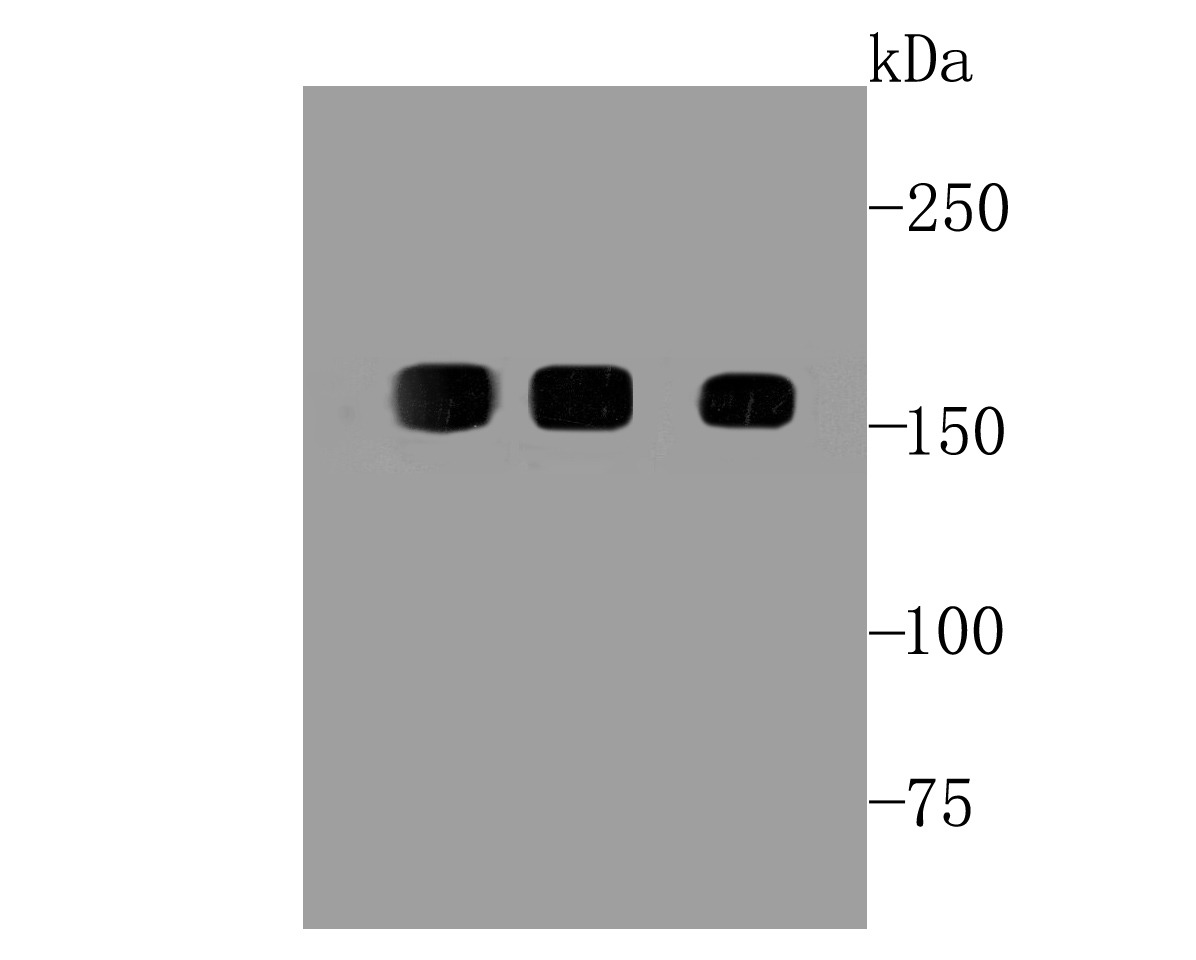  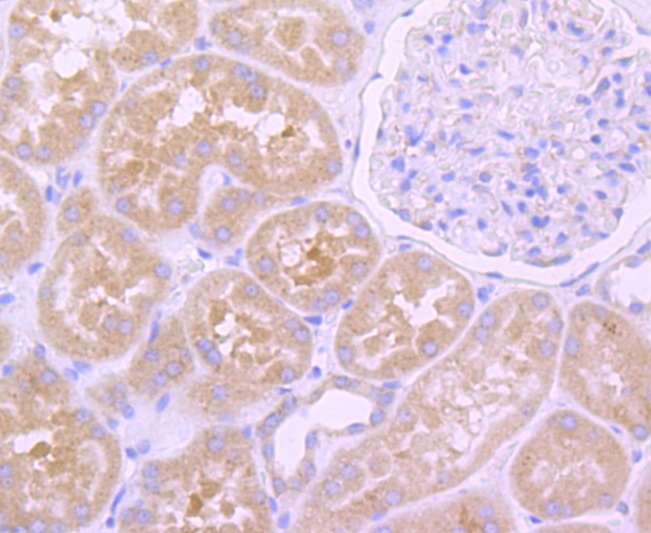 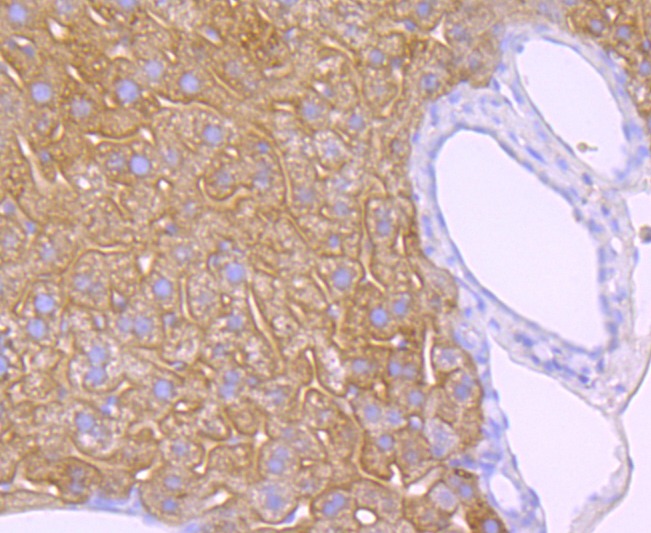 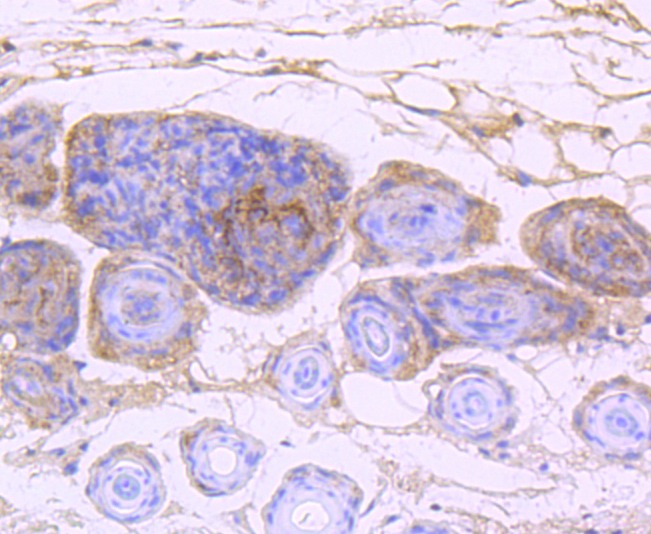 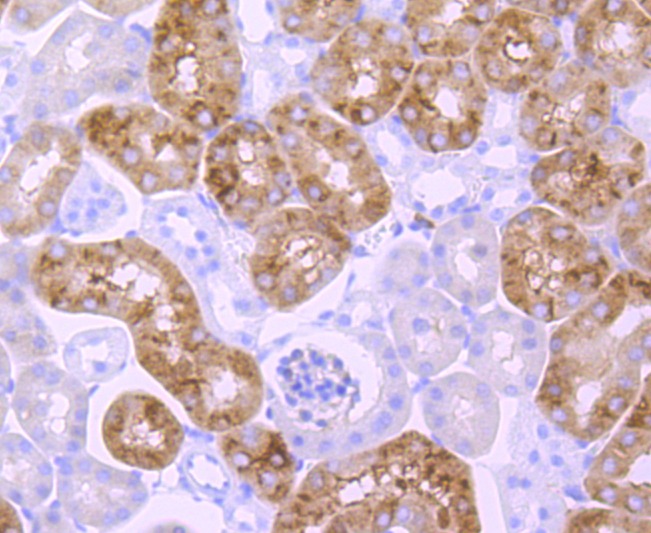 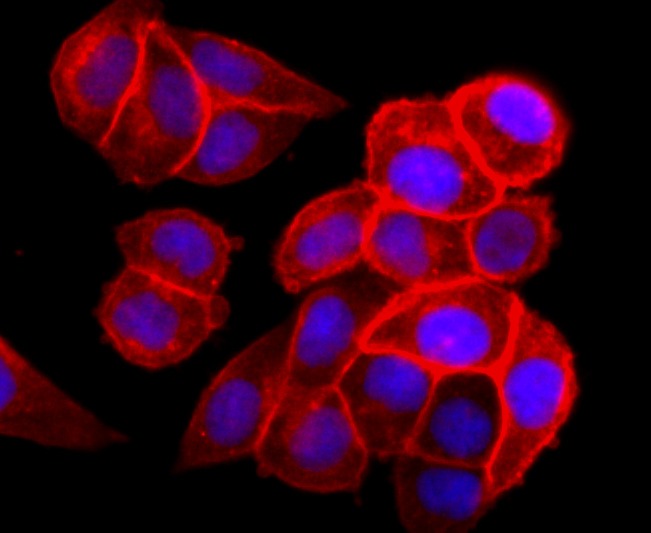 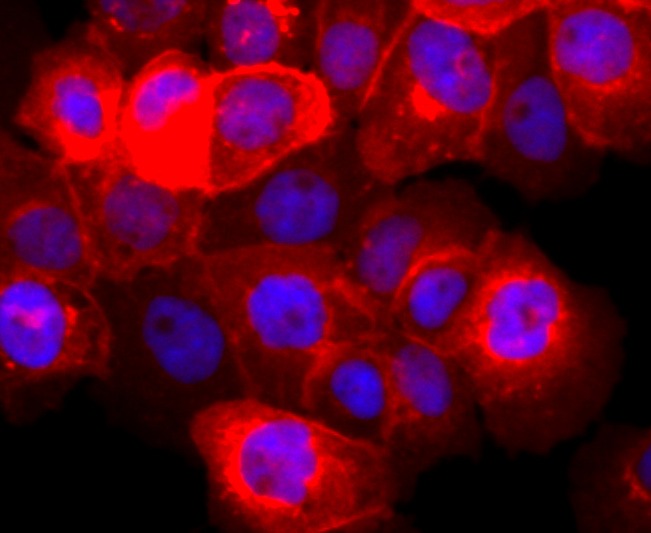 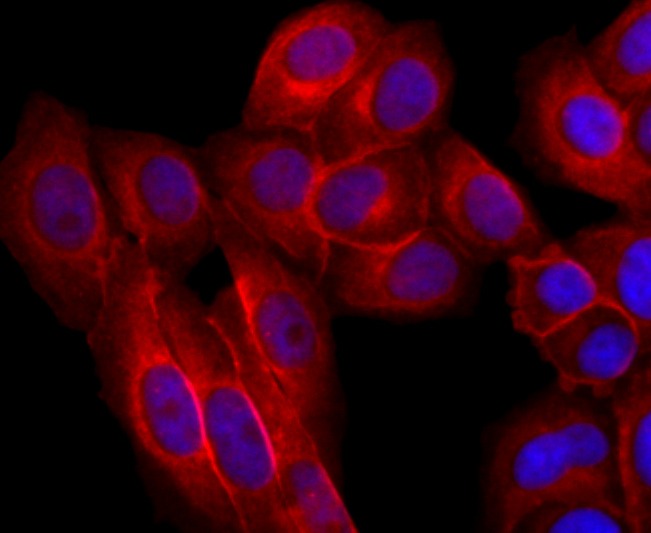 |
| 应用 | ICC/IFIHCIPWB |
| 推荐剂量 | WB: 1:1000-2000; IHC: 1:50-200; ICC/IF: 1:50-200; IP: 1:10-50 |
| 抗体种类 | Monoclonal |
| 宿主来源 | Rabbit |
| 构建方式 | Recombinant Antibody |
| 纯化方式 | ProA affinity purified |
| 性状 | Liquid |
| 缓冲液 | 1*TBS (pH7.4), 1%BSA, 40%Glycerol. Preservative: 0.05% Sodium Azide. |
| 研究背景 | The EGF receptor family comprises several related receptor tyrosine kinases that are frequently overexpressed in a variety of carcinomas. Members of this receptor family include EGFR (HER1), Neu (ErbB-2, HER2), ErbB-3 (HER3) and ErbB-4 (HER4), which form either homodimers or heterodimers upon ligand binding. Exons in the EGFR gene product are frequently either deleted or duplicated to produce deletion mutants (DM) or tandem duplication mutants (TDM), respectively, which are detected at various molecular weights. EGFR binds several ligands, including epidermal growth factor (EGF), transforming growth factor α (TGFα), Amphiregulin and heparin binding-EGF (HB-EGF). Ligand binding promotes the internalization of EGFR via Clathrin-coated pits and its subsequent degradation in response to its intrinsic tyrosine kinase. EGFR is involved in organ morphogenesis and maintenance and repair of tissues, but upregulation of EGFR is associated with tumor progression. The oncogenic effects of EGFR include initiation of DNA synthesis, enhanced cell growth, invasion and metastasis. Abrogation of EGFR results in cell cycle arrest, apoptosis or dedifferentiation of cancer cells, suggesting that EGFR may be an effective therapeutic target. |
| 偶联 | Unconjugated |
| 免疫原 | Recombinant Protein |
| Uniprot ID |
| 分子量 | Theoretical: 134 (Observed: 150) kDa. |
| 储存方式 | Store at -20°C or -80°C for 12 months. Avoid repeated freeze-thaw cycles. |
| 运输方式 | Shipping with blue ice. |
评论内容